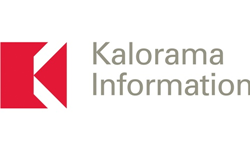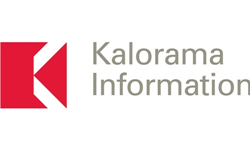
“COVID-19 obviously was a net plus for POC, but the applications aren’t limited to COVID-only.”
ARLINGTON, Va. (PRWEB)
May 06, 2022
A new report from market researcher Kalorama Information confirms what many in the industry have predicted for years: tests that can provide results at the point of care will see a greater market opportunity and growth rate than lab-based tests. The market research firm, part of Science and Medicine Group, said that in 2021, the POC market reached $41,149 million.
The firm notes that large market could be a temporary total depending and could decline based on how COVID-19 testing demand proceeds; however the market remains large and so does the growth rate, as the POC trend affects many segments including glucose, urinalysis and hematology.
“If you can get a result where it can make a difference, you are adding value that at least in aggregate of all products is getting around the price pressure on lab-based tests.” said Bruce Carlson, SVP of Publications for Science and Medicine Group. “COVID-19 obviously was a net plus for POC, but the applications aren’t limited to COVID-only.”
Diagnostic tests performed outside the central laboratory or decentralized testing is generally known as point-of-care (POC), including rapid testing. POC tests are performed onsite in a medical facility while rapid testing can be run in various types of medical settings or at home.
Kalorama’s analyst undergo detailed analysis of financial reports, medical journals and government data dn for two decades have made forecasts of IVD markets. projects that from 2023-2026, point of care technologies will grow nearly 8 percent in revenues per year. That’s compared to 2-3% growth over in the IVD market.
The firm also notes:
Watch Wearable POC Test Devices: It is anticipated that the first diagnostic wearables will use what have been termed smartwatches. The most advanced in this area is Apple’s Apple Watch, with its built-in health and fitness apps and the HealthKit app development platform. Not only does HealthKit provide a set of tools for Apple Watch app developers, but it also serves as a cloud-based repository for patient-generated health data. It enables Apple Watches to collect and transfer data between compatible apps, to at-home health monitoring devices, and also to the EHRs of physicians and hospitals. Google Fit works on the Android phone operating system and is also courting EHR vendors and app developers who may want to leverage its repository of self-generated patient health information.
Kalorama notes that in December 2015, Google filed a patent potentially leading to a watch that can draw blood without a needle. This could have medical implications for patients with diabetes and other conditions where blood draws are a necessity. The device proposed would draw a minute drop of blood through a tiny particle shot at hyperspeed through the skin, without the wearer even really feeling the blood draw. Gentag (Washington, DC) has been developing wearable remote patient monitoring (RPM) biosensors for at least 10 years. The company’s products have not yet been commercialized but claim to allow constant monitoring of physiological signals and provide a response to the need for monitoring individuals over weeks or months. In July 2016, Bellabeat (San Francisco, CA) launched their new Leaf Urban; a health tracker designed as a piece of jewelry for women that helps predict stress levels based on lifestyle habits. Bellabeat reported it has distributed over 400,000 devices.
Also to watch: Biosensors. Biosensor technology use substrates, nanomaterials and advanced spectroscopic or electromagnetic wavelength analysis methods to perform extremely sensitive testing on a small platform that signals results through an electronic digital system. Industry leveraging of biosensor and microfluidics technologies has been diverse with manifold products available on the market and in development. For instance, Scope Fluidics Group (Poland) introduced its PCR/One system. The PCR/One system is a 15-minute POC PCR for screening and syndromic testing that offers the most rapid detection of bacteria and viruses – up to 20 different pathogens and drug resistance genes. The system is designed to analyze samples in under 15 minutes and is compact making it suitable for use in almost any medical practice or hospital.
Kalorama notes that biosensoring is early in its development and proof of contribution to diagnostics, but the COVID crisis showed the need for faster results and results relevant to a patient.
“That doesn’t mean the ‘there is there’ yet with biosensors as POC devices, but they are in the development mix,” Carlson said. “And represent perhaps the ultimate point of care, maybe point before care which is even better.”
For more information or to purchase The Worldwide Market for Point-of-Care (POC) Diagnostic Tests, 9th Edition, visit: https://kaloramainformation.com/product/the-worldwide-market-for-point-of-care-poc-diagnostic-tests-9th-edition/
About Kalorama Information:
Kalorama Information, part of Science and Medicine Group, has been a leading publisher of market research in medical markets, including the biotechnology, diagnostics, medical device, and pharmaceutical industries for more than 30 years. Our comprehensive, timely, quality research and innovative approach to analysis and presentation of market intelligence have made Kalorama Information a premier source of market information for top industry decision makers.
Share article on social media or email:

